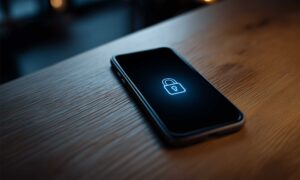In the world of martial arts, karate practitioners learn the art of self-defense through discipline, awareness, and strategic techniques. Just as these fighters protect themselves against physical threats, you can also arm yourself against cyber threats.
Awareness is Key
Just as situational awareness is crucial in karate, being aware of the digital environment is the first step towards cybersecurity. Be cautious of suspicious emails, links, and attachments, much like how a martial artist is wary of their surroundings. Phishing attacks, which trick individuals into giving away personal information, are the digital equivalent of a surprise attack. Train your mind to spot these threats by questioning the legitimacy of requests for personal information.
Strong Passwords: The Foundation of Defense
In karate, a strong stance provides stability and defense against attacks. Similarly, strong, complex passwords are the foundation of your digital defense. Use a mix of letters, numbers, and symbols, and avoid using the same password across multiple accounts. Consider a password manager to keep your passwords secure and accessible only to you.
Regular Updates: Sharpening Your Skills
Continuous improvement and learning new techniques are essential in karate. In the digital realm, this translates to regularly updating your software and applications. Cyber attackers often exploit vulnerabilities in outdated software. By keeping your systems up-to-date, you’re effectively sharpening your defenses against attacks.
Two-Factor Authentication: The Double Block
Karate teaches the effectiveness of combining techniques, such as using a block followed by a counterattack. In digital security, this is mirrored by two-factor authentication (2FA). With 2FA, accessing your accounts requires not just a password (the first block) but also a second verification, like a code sent to your phone (the counterattack). This double layer of security makes it much harder for attackers to breach your digital space.
Secure Connections: Guarding Your Territory
Just as a karate practitioner is cautious of the terrain they stand on, be mindful of the networks you connect to. Public Wi-Fi can be a risky territory, making it easier for attackers to intercept your data. Use a virtual private network (VPN) to create a secure connection, encrypting your online activities from prying eyes.
Backup and Recovery: The Ability to Get Back Up
A key lesson in karate is the resilience to get back up after being knocked down. Similarly, regular backups of your important data ensure that, even in the event of a digital attack like ransomware, you can recover without significant loss. Use cloud services or external drives to keep your backups separate from your primary data.
Educate Yourself and Others: Spreading the Knowledge
Karate is not just about personal growth; it’s also about helping others grow by sharing knowledge. Stay informed about the latest in cybersecurity threats and protection strategies. Then, share this knowledge with friends, family, and colleagues to strengthen your community’s digital defense.
Principles of karate like awareness, strength, continuous improvement, combination techniques, guarding your territory, resilience, and education, can be applied to digital self-defense and IT security. By practicing and applying these strategies, you can protect your digital self with the same discipline and skill with which you can protect your physical self.







